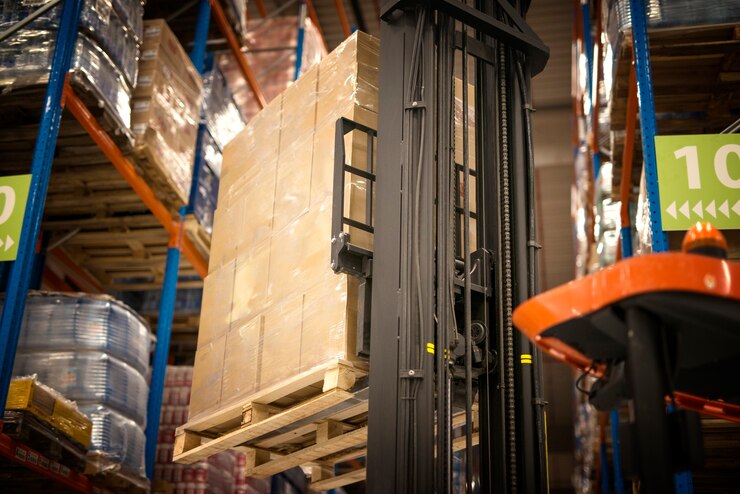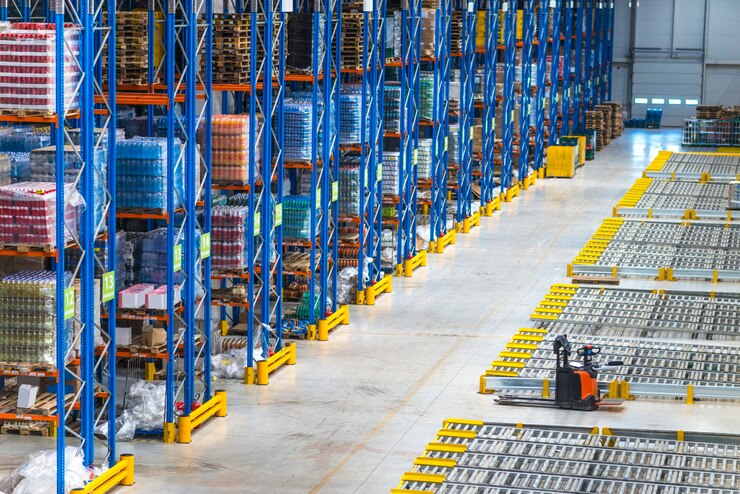Keeping your warehouse organised is a must if you want to be successful. Without an efficient system in the place, there’s a waste of time, stock gets misplaced and the entire organisation can become chaotic. One of the best ways to keep everything in check is by finding tools that will help you organise your workspace. Such tools can be reliable and handy pallet cages as the sturdy and versatile structures they are. They can revolutionise your warehouse management, making it easy to store, move and access goods.
What Are Pallet Cages?

Pallet cages are metal containers that fit onto standard pallets. They provide a secure way to store and transport different kinds of goods, ensuring everything stays in place and protected. Made from durable materials like steel, these cages are designed to handle heavy loads and withstand the rigours of a busy warehouse environment. They come in various sizes and designs, each tailored to specific storage needs.
Types
There are several types of cages available, each having different purposes. For example, the mesh pallet cages and made with a wire mesh design, which provides visibility and ventilation for the stored products. This type is particularly useful if you need to quickly identify the contents without opening the cage.
Mesh cages are ideal for items that need air circulation or those you want to keep in sight for other purposes. The sturdy mesh construction ensures that the foods are well-protected. Logistic and storage cages are designed specifically for that, to optimise storage and logistic operations. They often come with features like stackability and foldability, making them incredibly versatile.
Logistic and stillage cages can be stacked on top of each other, helping you take advantage of the vertical space in your warehouse. They are also ideal for businesses that need to frequently move and store large quantities of goods, providing a flexible solution that adapts to varying inventory levels. Then you have the multi-purpose cages.
As the name suggests, these cages are designed to handle a variety of tasks. They can be used for both storage and transportation. This versatility makes them an excellent investment for warehouses that need adaptable solutions. Multi-purpose cages often feature adjustable shelves or dividers, letting you customise the storage space according to your specific needs.
Transport cages are built for moving goods, safely and efficiently. They feature reinforced corners and bases to withstand the bumps and jolts of transportation. Some of these transport cages also come with wheels or castors for easy movement within the warehouse. These cages are essential for businesses that need to frequently transport goods between different locations, ensuring that items arrive in perfect condition.
Benefits
Implementing these cages in your warehouse comes with a lot of benefits and advantages that can significantly improve efficiency and organisation, so let’s look at some of them. Firstly, these cages enhance the safety of your warehouse. By securely containing items, they reduce the risk of accidents caused by loose or falling goods.
This is particularly important in busy environments where safety is paramount. That way not only are you protecting your goods, but the employees in the warehouse as well. Secondly, they help in keeping your inventory organised. With everything neatly contained and easily accessible, stock checks become quicker and more accurate.
This improvement organisation also speeds up the picking and packing process, ensuring orders are fulfilled faster. This boosts the efficiency of your warehouse operations. They make it easier to move goods around too, whether by forklift or manually. This movement saves time and reduces the physical strain on workers, contributing to a smoother workflow.
Maintenance

To get the most out of your durable pallet cages, you need to make sure they are in optimal condition. Proper care not only extends their lifespan but also ensures that they continue to function effectively. Start with regular inspections. Check for any signs of damage, such as bent frames, rust or any broken parts. Making sure that these issues are taken care of promptly prevents them from worsening and compromising the cage’s integrity and by extension the safety of the products and the workers.
Cleaning your cages is another important aspect of maintenance. Dust and grime can accumulate over time, especially in a busy warehouse. A simple wipe-down can keep them looking good and functioning well. For more stubborn dirt and stains, a mild detergent and water should do the trick.
Lubrication is key for any moving parts, such as hinges. Regularly applying a suitable lubricant ensures smooth operation and prevents wear and tear. It’s also worth checking that any locking mechanisms or latches are working properly as these are crucial for the containment of goods. Careful and proper handling and storage will also help maintain the condition of your cages. Avoid overloading them beyond their recommended weight capacity as this can cause permanent damage.
Incorporating these cages into your warehouse is a smart move towards achieving better organisation and inventory management to enhance the protection of goods and optimised storage space. By choosing the right type of cage for your needs, and maintaining it properly, you can ensure it will serve your business well for years to come.











